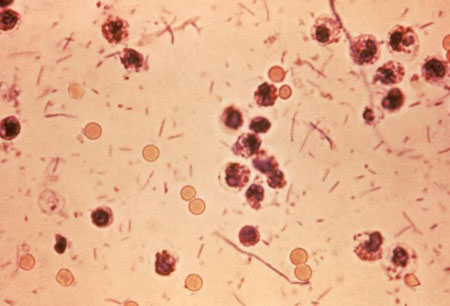Resumo
Definição
History and exam
Key diagnostic factors
- diarrhea
- cramping abdominal pain
- fever
- tenesmus
- abdominal pain or tenderness
- features of hemolytic uremic syndrome
Other diagnostic factors
- signs of volume depletion
- increased bowel sounds
- vomiting
- meningismus or other signs of altered neurologic status
- febrile seizures
- somnolence
Risk factors
- exposure to contaminated water or food or direct fecal-oral contact
- age <5 years
- malnutrition
- poor hygiene and cramped conditions
- travel to endemic areas
- men who have sex with men
Diagnostic tests
1st tests to order
- stool microscopy, culture, and sensitivity
- serum BUN and creatinine
- CBC
Tests to consider
- Shigella serotyping
- peripheral blood smear
- abdominal x-ray
- flexible sigmoidoscopy
Treatment algorithm
suspected or confirmed shigellosis
Contributors
Authors
Ashley Barnabas, MRCP
Consultant Hepatologist and Gastroenterologist
St Mark's and Northwick Park Hospitals
Middlesex
UK
Disclosures
AB declares that he has no competing interests.
Acknowledgements
Dr Ashley Barnabas would like to gratefully acknowledge Dr Gehanjali D.A. Amarasinghe, Dr Richard Pollok, and the late Dr Satish Keshav, the previous contributors to this topic.
Disclosures
GDAA and RP declare that they have no competing interests.
Peer reviewers
David Acheson, MD
Chief Medical Officer
Director of Food Safety and Security
US Food and Drug Administration
Rockville
MD
Disclosures
DA declares that he has no competing interests.
Franz Allerberger, MD, MPH
Professor of Clinical Microbiology
Austrian Agency for Health and Food Safety (AGES)
Vienna
Austria
Disclosures
FA declares that he has no competing interests.
Peer reviewer acknowledgements
BMJ Best Practice topics are updated on a rolling basis in line with developments in evidence and guidance. The peer reviewers listed here have reviewed the content at least once during the history of the topic.
Disclosures
Peer reviewer affiliations and disclosures pertain to the time of the review.
References
Key articles
World Health Organization. Guidelines for the control of shigellosis, including epidemics due to Shigella dysenteriae type 1. 2005 [internet publication].Full text
King CK, Glass R, Bresee JS, et al. Managing acute gastroenteritis among children: oral rehydration, maintenance, and nutritional therapy. MMWR Recomm Rep. 2003 Nov 21;52(RR-16):1-16.Full text Abstract
Riddle MS, DuPont HL, Connor BA. ACG clinical guideline: diagnosis, treatment, and prevention of acute diarrheal infections in adults. Am J Gastroenterol. 2016 May;111(5):602-22.Full text Abstract
Shane AL, Mody RK, Crump JA, et al. 2017 Infectious Diseases Society of America clinical practice guidelines for the diagnosis and management of infectious diarrhea. Clin Infect Dis. 2017 Nov 29;65(12):e45-80.Full text Abstract
Murphy MS. Management of bloody diarrhoea in children in primary care. BMJ. 2008 May 3;336(7651):1010-5.Full text Abstract
Reference articles
A full list of sources referenced in this topic is available to users with access to all of BMJ Best Practice.

Differentials
- Non-Shigella bacterial diarrhea
- Viral gastroenteritis
- Parasitic diarrhea
More DifferentialsGuidelines
- CDC Yellow Book: health information for international travel - shigellosis
- WHO model list of essential medicines for children - 9th list, 2023
More GuidelinesPatient information
Diarrhea in adults
Diarrhea in children
More Patient informationLog in or subscribe to access all of BMJ Best Practice
Use of this content is subject to our disclaimer